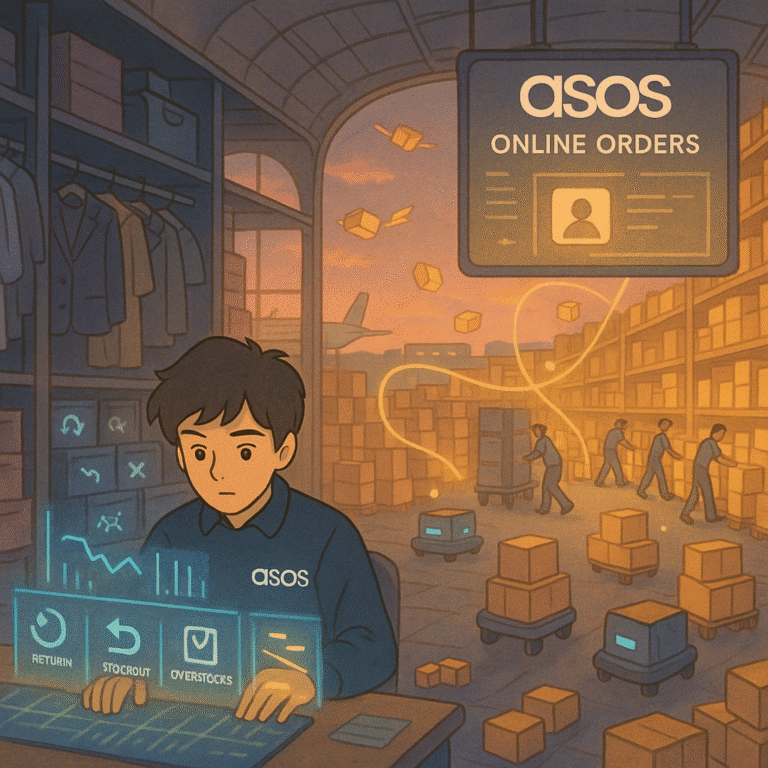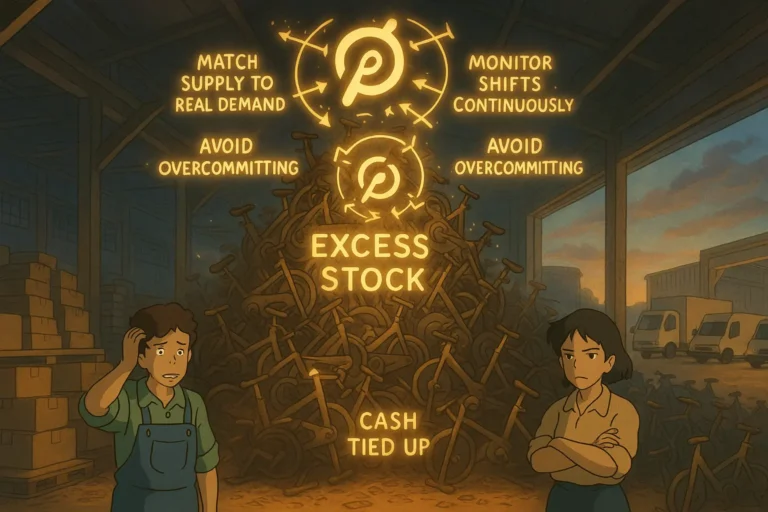
Packaging and labelling are critical to any supply chain if the supply chain is solving for efficiency. They are two of the most important processes for optimization, and they are largely responsible for eliminating errors during order processing.
Packaging and labelling can mean the difference between profit and loss for African supply chains. This is why many businesses invest in ensuring they have the best of both processes.
In this article, we explore the best practices African supply chains can adopt for their packaging and labelling operations.
What are Packaging and Labelling?
Think about it. Most products cannot be shipped on their own. Imagine Coca-Cola selling the liquid substance to you or KFC putting its potato chips on your hands.
This is where packaging and labelling come into play. They are both responsible for enclosing a product into an appropriate material and providing the necessary information that guarantees the customers have an idea of what they are buying.
Packaging and labelling ensure products are well protected from contamination while preventing mix-ups from the operator or consumer.
They are two distinct but interwoven processes for any brand, business, or supply chain. Packaging encloses any product. And labelling is information attached to the package.
Best Practices African Supply Chains Can Adopt for Packaging and Labelling
For this article, we are discussing practices relevant to African supply chains with typically small to medium-scale operations.
1. Consider Language
Language is important, and Africa is home to about a third of the world’s languages. There are over 2,000 languages spoken on the continent, so you can imagine how much communication matters.
Although there are over 2,000 languages and dialects, there are mainstream languages across the continent, such as Swahili, English, French, and Afrikan. Most of the population usually speaks these mainstream languages in any region where they are found.
Supply chains should use mainstream languages when packaging and labelling their products to ensure everyone can understand. It makes things easier for the operators and customers. It also prevents errors and mix-ups.
2. Protection
Protection is critical for most products. An apple doesn’t need much packaging and labelling, but milk does. Therefore, supply chains across the continent should consider the nature of the product and how best they can be protected.
There is no one-size-fits-all approach. However, it is imperative that whatever packaging the supply chains settle for can protect the product from contamination and damage. When packaging, consider transportation and its rigorous nature.
This way, the supply chains can ensure they can get their products to the market and consumers without fear of loss or harm to the consumer.
3. Barcoding and Serialization
Barcoding and serialization make automation and sorting more effective in supply chain operations. Most computer systems and robots do not know what Coca-Cola is, but they can be better utilized with barcoding and serialization.
The barcoding and serialization will often contain information such as the number of products in stock, the price, and other necessary details that may benefit the operator or consumer.
The bottom line is they simplify the order processing and general supply chain operations, especially because of all the information they contain.
4. Clear and Informative
Supply chains should prioritize clear and informative messaging over design and creatives. No matter how beautiful the packaging is, the supply chain will have difficulty if people and machines cannot tell what is inside.
Clear and informative messaging goes a long way to prevent errors during order processing. Poor information is responsible for over 70% of order processing errors. Simple and clear messaging could save the supply chain a lot of money.
The best scenario is to make each unique product as distinct as possible. Take Coca-Cola, for instance. The Coke is distinct from Fanta and Sprite in its packaging and labelling. An operator and a customer will have difficulty mixing up the two, no matter how tired the person is.
5. Collaborate with Suppliers
You cannot leave the suppliers out of this. You have to collaborate with them to develop packaging and labelling that makes things easier for them. This way, you are assured you can get the best service from them.
An example is with the logistics providers. You want to provide packaging and labelling that will not fall apart during transportation. African roads are poor for the most part, and the terrain is rough. Ensuring the packaging withholds these challenges is very important.
This can also apply to other areas, such as production and warehousing.
When collaborating with suppliers, consider the storage capacity of the suppliers, compatibility of various modes of transportation, raw materials, stacking, and ease of production.
Factors African Supply Chains Should Consider During Packing and Labelling
There are factors these supply chains have to consider to make these best practices effective.
𝟭. 𝗡𝗮𝘁𝘂𝗿𝗲 𝗼𝗳 𝘁𝗵𝗲 𝗣𝗿𝗼𝗱𝘂𝗰𝘁: Different products will require different levels of packaging. The same product you will put in a tin, you may not be able to put in a plastic and vice versa. African supply chains need to consider the product’s nature and complexity.
𝟮. 𝗖𝗼𝗺𝗺𝘂𝗻𝗶𝗰𝗮𝘁𝗶𝗼𝗻: Supply chains should prioritize communication of the product and what to expect to consumers. It is in communication that these supply chains can be concise and clear. Communication also factors in what to put on the labelling.
𝟯. 𝗕𝘂𝗱𝗴𝗲𝘁 𝗰𝗼𝗻𝘀𝘁𝗿𝗮𝗶𝗻𝘁𝘀: African supply chains with budget constraints should also consider that when packaging and labelling. Different packaging comes with varying degrees of pricing. These supply chains should find what works for them within a reasonable price
𝟰. 𝗖𝗼𝗻𝘀𝘂𝗺𝗲𝗿 𝗖𝗼𝗻𝘃𝗲𝗻𝗶𝗲𝗻𝗰𝗲: The customer is the supply chain’s main feature and the reason behind the product. Ensuring the packaging and labelling are convenient for the customer only makes sense. Imagine putting a drink in a container as long as the customer.
Why are Packaging and labelling important for African Supply Chains?
Packaging and labelling are much more than just look and feel. Here, we explain how supply chains across Africa can benefit from it.
𝟭. 𝗘𝗹𝗶𝗺𝗶𝗻𝗮𝘁𝗲 𝗘𝗿𝗿𝗼𝗿𝘀: You want to reduce as many errors as possible in the supply chain operation. This is necessary whether it is during order processing or in any other process under the supply chain. People and Machines are much more effective with the right packaging and labelling.
𝟮. 𝗣𝗿𝗼𝘁𝗲𝗰𝘁𝗶𝗼𝗻: When done properly, packaging and labelling will always consider the product’s preservation. This is primarily because if the packaging doesn’t hold, the product can be damaged or contaminated, leading to a loss for the supply chain.
𝟯. 𝗖𝗼𝗻𝘀𝘂𝗺𝗲𝗿 𝗦𝗮𝗳𝗲𝘁𝘆: You want the product to be as safe as possible. Proper packaging and labelling help ensure this. It also carries information on the product and how to use it, ensuring the customer can utilize it effectively.
You don’t want the consumer to think detergent is sugar or salt.
𝟰. 𝗕𝗿𝗮𝗻𝗱 𝗥𝗲𝗰𝗼𝗴𝗻𝗶𝘁𝗶𝗼𝗻: Consumers can recognize the product or brand from a mile away with the right packaging. Think of any popular brand, and you would recognize or appreciate the uniqueness in their packaging and labelling.
FAQS on Packaging and Labelling for African Supply Chains
Explore some of the commonly asked questions regarding packaging and labelling.
Q1: What steps can supply chains take to address cultural diversity in packaging for markets in Africa?
Supply chains may deal with cultural diversity by learning about regional traditions, emblems, and colour schemes. Packaging should be made with various audiences in mind, considering cultural quirks.
Q2: What does labelling play in African supply networks’ adherence to regulations?
Labelling is necessary for African supply chains to comply with regulations. It offers specifics on ingredients, nutritional information, and safety precautions, all mandated by municipal and regional laws.
Q3: What role can packaging play in making African supply chains more sustainable?
Packaging can promote sustainability by utilizing eco-friendly materials, reducing waste, and switching to recyclable or biodegradable solutions. Sustainable packaging fits nicely with current environmental trends worldwide.
Conclusion
Packaging and labelling in African supply chains can transform their operational success and capacity. They also help with cost savings and profitability by promoting efficiency, brand recognition, and streamlined processes.

Obinabo Tochukwu Tabansi is a supply chain digital writer (Content writer & Ghostwriter) helping professionals and business owners across Africa learn from real-world supply chain wins and setbacks and apply proven strategies to their own operations. He also crafts social content for logistics and supply chain companies, turning their solutions and insights into engaging posts that drive visibility and trust.








